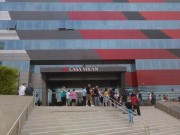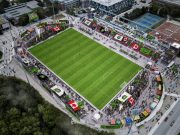A few days after the promotion to Serie A for SPAL and Hellas Verona, there is still much to be decided in the highest Italian competition. Two teams have been relegated to Serie B from a while ago and the third one is just a point away from an unexpected salvation.
Crotone, who won the Serie B championship the last season and depleted its roster in the summer transfer window, has performed extremely well in the final part of the season with an average points per game that rivals teams at the top of the table.
Should Crotone avoid relegation, it would be the equivalent feat of David versus Goliath. There are various reasons for this, the main one being the gap in the top league is too wide and noncompetitive for the smaller clubs to compete in a market that essentially is inaccessible to them. This applies not only for Serie A but also for the rest of the major European leagues.
Analyzing the last 12 Serie A seasons, the smallest market value of a team and the team with the least skilled players has always belonged to the team coming from Serie B. This fact is not surprising – a team who has limitations on the market can’t compete against teams established in Serie A from an economic point of view, because sports goals are tied in with balance sheet results.
So, with a turnover index set for twelve teams for market value, each year whoever got promoted to Serie A from Serie B starts the season in difficulty for two reasons: the first one because although the value of the team is very high for the Serie B championship, it is extremely low for the Serie A one; the second is the quality of the roster which will usually go down as the bigger clubs reinforce their roster by purchasing players from the promoted clubs.

Photo Giuseppe Celeste / Insidefoto
For example, Milan bought Gianluca Lapadula for €10 million and Pescara lost their best striker who during the 2015/16 season scored 39% of the goals for Massimo Oddo’s team. Therefore we should not be surprised Pescara was officially relegated so soon in the season. On the other hand, this transfer helped president Daniele Sebastiani cash in and finish the season without being in the red.
If we look at the last two seasons of Italy’s top two leagues, the change between the three promoted teams and the three relegated teams show us that two out of three promoted teams remain in Serie A for just one year.
For purposes of this analysis we look at Spal, won the Serie B championship while Frosinone and Hellas Verona were tied for second on equal points. Frosinone however have to go through the playoff route for a chance to get promoted to Serie A, while in relegation we have Pescara and Crotone (who are on the cusp of being relegated as well).
Market Analysis
Translated into market values, we note that during the last two season the balance between relegated and promoted teams pivots towards the first one: in 2015/16, Pescara, Crotone and Cagliari had an aggregate market value of €104,80 million while Carpi, Verona and Frosinone had a €167,18 million market value, a difference of €62,38 million in favor of the relegated teams.
The same applies to the previous season, when the consolidated market values of Carpi, Frosinone and Bologna was set at €134,91 million as opposed to €193,45 million for Cagliari, Cesena and Parma, a difference of €58,54 million.
It’s easy understand when the relegated teams have a superior aggregate market value than the promoted ones, the only one who suffers the repercussions is the Serie A as a whole. There is a qualitative decline that renders the competition less appealing for the Italian football fans and various stakeholders, and a decrease in the unpredictability of the result.
The only ones to benefit from this are the mid table and top clubs, who view the new promoted teams as being less competitive than the ones that just got relegated. This can explain why two out of three promoted clubs only remain in Serie A for one season.
The only thing that remains is getting used to this system where the clubs with a higher purchasing power improve their team by buying players from their competition and in doing so reap the economic rewards which will further increase the purchasing power of these clubs. Consequently, the Serie A along with other European football leagues will be a competition where the result is easily predictable, with a league composed of teams in two different markets.






































